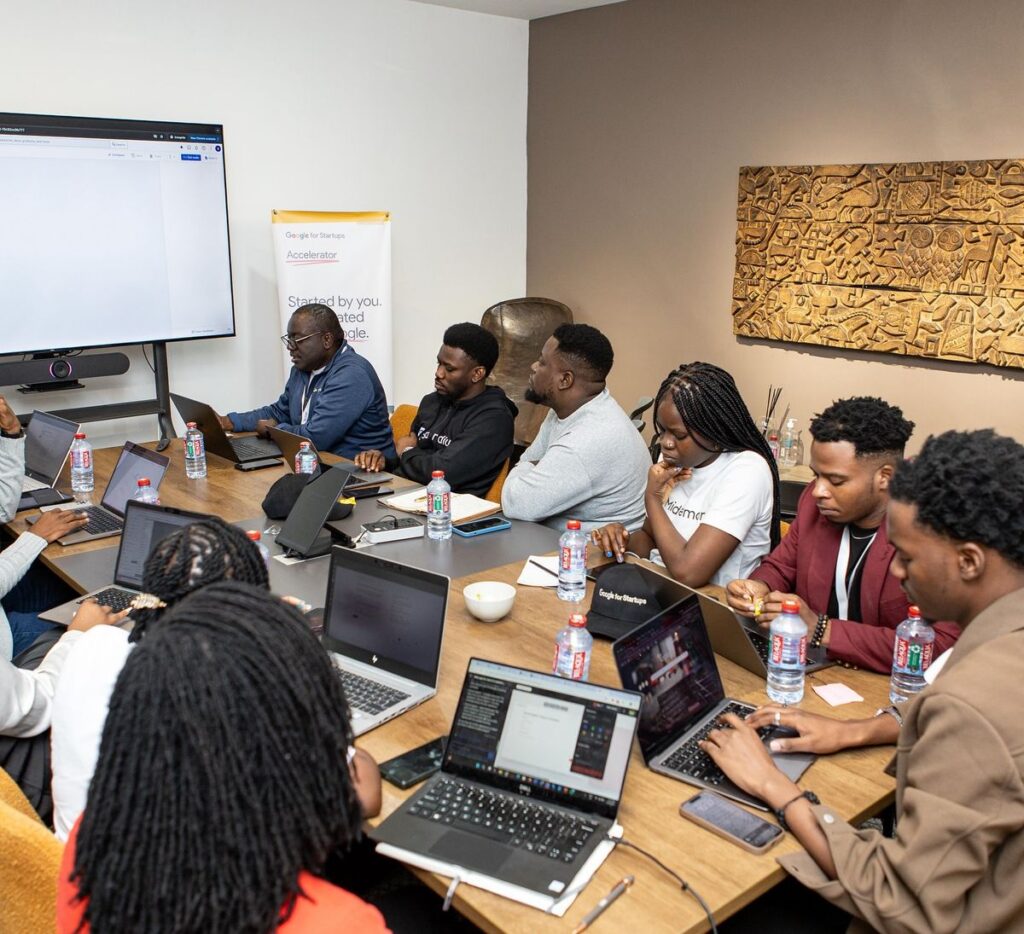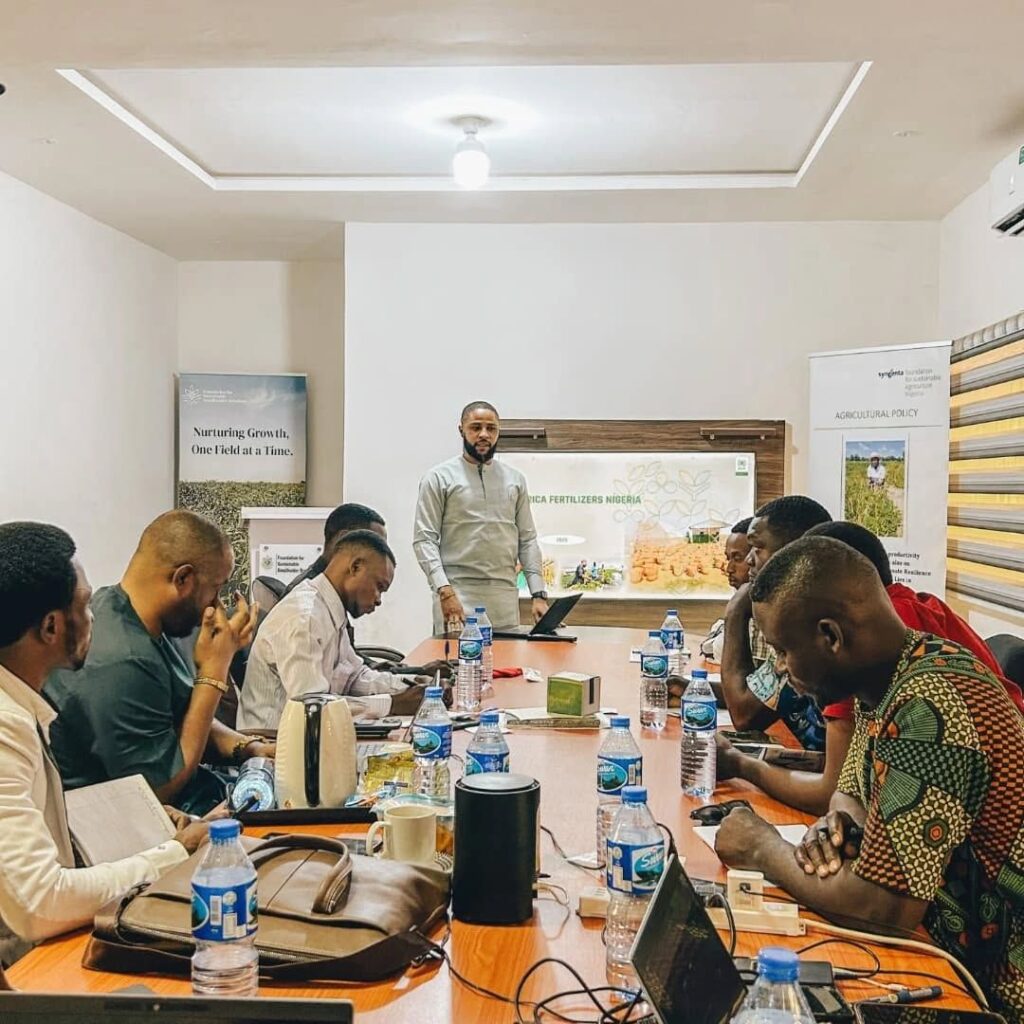
Introduction
The global talent marketplace has opened unprecedented opportunities for African businesses to access world-class expertise. Yet, one critical challenge remains: how can you pay international contractors efficiently without incurring significant fees, delays, and currency fluctuations?
The numbers tell a compelling story. Africa’s cross-border payments market is projected to explode from $329 billion in 2025 to over $1 trillion by 2035, a threefold increase driven by digital transformation and exploding demand for international talent. Meanwhile, the continent’s gig economy is booming, with an 11% annual growth rate, and Kenya alone has seen a staggering 216% increase in online freelancers over the past five years.
Yet African businesses still face the world’s highest cross-border payment costs. Sending $200 to Sub-Saharan Africa costs an average of 8.4% nearly three times the global average, with traditional banks charging a crushing 11.48% in fees. For businesses paying contractors monthly, these costs quickly compound into devastating losses.
Enter stablecoins, a financial innovation that’s transforming how African businesses manage cross-border payments. Here’s why smart companies across the continent are making the switch, and why this trend is accelerating faster than anywhere else in the world.
As remote work becomes standard across the world, African businesses are increasingly looking beyond their local talent pools to hire freelancers, skilled technical teams, and creative contractors globally. The appeal is clear: access to specialized expertise, competitive pricing, and flexible collaboration.
Stablecoins are solving this problem quickly and efficiently.
The Traditional Payment Problem: Africa’s Unique Burden
If you’ve ever paid an international contractor through traditional banking channels, you know the frustration. Wire transfers can take 3-7 business days, cost $25-50 per transaction, and come with opaque exchange rates that eat into your budget. Payment processors like PayPal or Wise are faster but still charge 2-5% in fees, and your contractor often faces additional withdrawal costs on their end.
But African businesses face an even steeper challenge. Cross-border payments on the continent are plagued by fragmented infrastructure, with 54 different currencies and regulatory systems creating a maze of inefficiencies. Most transactions still require conversion to US dollars through expensive correspondent banking networks, adding layers of intermediaries and fees.
The data is sobering: while banks remain the most popular channel for business payments, they’re also the costliest at 11.48% per transaction. Even mobile money transfers, which have revolutionized domestic payments, cost 7% or more for cross-border transactions. For a mid-sized company paying $100,000 monthly to contractors, this translates to losing $11,480 each month, or $137,760 annually, purely to payment infrastructure.
Currency volatility adds another dimension to the problem. Between 2020 and 2024, Zimbabwe’s dollar lost over 75% of its value against the US dollar, Nigeria’s naira has depreciated more than 75% in five years, and Ethiopia’s birr plummeted 30% in a single month in 2024. When you authorize a payment today, the actual value your contractor receives can be dramatically less by settlement, turning financial planning into guesswork.

What Are Stablecoins?
Stablecoins are digital currencies pegged to stable assets, usually the US Dollar (USD). This makes them different from volatile cryptocurrencies like Bitcoin; their value remains stable, making them ideal for payments.
Common stablecoins used for contractor payments:
Think of them as digital dollars that move at the speed of the internet. Businesses can send and receive stablecoins using blockchain wallets or payment platforms fast, securely, and at very low cost.

Why African Businesses Are Leading Stablecoin Adoption
Africa isn’t just participating in the stablecoin revolution; it’s leading it. In 2024, stablecoins accounted for 43% of all cryptocurrency transaction volume in Sub-Saharan Africa, with the region recording stablecoin flows equivalent to 6.7% of GDP, one of the highest ratios globally. This isn’t speculation; it’s practical problem-solving at scale.
1. Dramatically Lower Fees
Stablecoin transactions typically cost between $0.01- $5, regardless of the amount being sent. Nigeria alone processed nearly $22 billion in stablecoin transactions between July 2023 and June 2024, with businesses increasingly using stablecoins for payroll, cross-border settlements, and treasury management.
Compare this to traditional methods: sending $50,000 monthly to contractors via bank wire at 11.48% costs $5,740 per month and $68,880 annually. Using stablecoins at $2 per transaction costs $24 annually. That’s a saving of $68,856 per year that can be reinvested in hiring more talent, expanding operations, or improving margins.
For businesses in the gig economy, which is growing at a 16.9% CAGR in Africa and projected to reach $11.2 billion by 2031, these savings are transformative. Fintech startups report reducing remittance costs by up to 90% through stablecoin rails, with one pilot program cutting fees from 29% to just 2% for Kenyan freelancers receiving micropayments.
2. Lightning-Fast Settlements
Stablecoin transactions settle in minutes, not days. Your contractor in Europe, China, or the USA receives payment instantly, improving relationships and ensuring they can access funds when needed. In volatile markets where exchange rates can shift significantly in 3-7 days, this speed isn’t just convenient; it’s financially material.
South African companies are already running entire payrolls on stablecoin infrastructure, paying staff and contractors across the continent without the delays and costs of traditional banking. This is particularly crucial in a continent where 70% of freelancers rely on gig income for personal needs like remittances and savings.
3. Currency Stability and Transparency
By paying in USD-pegged stablecoins like USDC (42.7% of Africa’s stablecoin volume) or USDT (57.3%), both you and your contractor know exactly what’s being sent and received. There are no hidden exchange rate margins or surprise deductions.
This transparency is especially valuable in economies experiencing severe currency devaluation. In Nigeria, as the naira plummeted to record lows, stablecoin inflows for transactions under $1 million surged to nearly $3 billion in Q1 2024 alone. Ethiopian businesses are experiencing similar patterns, with stablecoin adoption growing 180% year-over-year as the birr lost 30% of its value.
4. Access to Global Talent Pool
Many skilled contractors, particularly in emerging markets, now prefer or exclusively accept stablecoin payments. Yellow Card, Africa’s largest stablecoin platform operating in 20 countries, reports that 99% of its business now runs on stablecoins, with 30% of users relying on them for business operations.
By offering stablecoin payment options, you immediately expand your talent pool and become more competitive in attracting top freelancers and agencies. In Kenya, where the gig economy has exploded with 216% growth in online freelancers, the combination of M-Pesa infrastructure and stablecoin integration makes contractor payments seamless.
5. Hedge Against Local Currency Volatility
For African businesses operating in environments with currency fluctuations, holding and transacting in stablecoins provides a critical buffer. Corporate stablecoin transactions grew 25% in 2024, with businesses using them for treasury management as an alternative to unreliable banking infrastructure.
You can maintain treasury reserves in stable USD-backed assets and convert to local currency only when necessary, giving you greater financial control and predictability. This is particularly valuable when planning long-term contractor relationships or international expansion.

How to Pay Contractors with Stablecoins (Step-by-Step)
The goal here is to make the process simple, repeatable, and professional, even if you or your contractors have never used stablecoins before.
Step 1: Choose a Reliable Payment Platform
You’ll need a platform that:
- Accepts your local currency (KES, NGN, GHS, RWF, ZAR, etc.)
- Allows you to convert to stablecoins
- Let you send directly to a contractor’s wallet.
Recommended platforms for African businesses
| PLATFORM | BEST FOR | WHY |
| Yogupay | Businesses in Africa | Local currency deposits, fast conversions, no high markup fees |
| Binance Pay | Global contractor payments | Widely supported, easy swaps |
| Coinbase Wallet | Contractors new to crypto | User-friendly onboarding |
| Metamask | Web3 savvy teams | Integrates with blockchain services |
If your business or contractor is based in Africa, Yogupay is generally the smoothest starting point because it doesn’t require foreign bank accounts and supports mobile money + bank deposits.
Step 2: Deposit Your Local Currency
Depending on the platform, you can fund your wallet via:
- Mobile Money (M-Pesa, AirtelMoney, MTN MoMo)
- Local bank transfer
- Card payments (where supported)
For example, on Yogupay:
- Log in
- Choose Deposit
- Select your currency (e.g., KES)
- Choose Mobile Money
- Confirm the payment request on your PC or phone
Funds appear instantly or within a few minutes.
Step 3: Convert to Stablecoins
Now convert your deposited funds to a stablecoin, usually USDT or USDC.
Example conversion flow:
KES → USDT (TRC-20)
Network choice matters; select a low-fee blockchain such as TRON (TRC-20) or Polygon.
Why: Sending USDT on TRON costs $0.01 or less, while Ethereum (ERC-20) can cost $5–$50 during congestion.
Step 4: Request Contractor Payment Details
Ask your contractor:
- Their wallet address
- The network they want to use
- The stablecoin they accept
This eliminates guesswork and prevents failed transactions.
Step 5: Send a Small Test Transaction (Optional but Recommended)
Send $1 to $5 first.
Why?
- Blockchain payments cannot be reversed.
- Ensures the wallet and network are correct
If your contractor confirms receipt → proceed with the full payment.
Step 6: Send the Full Payment
Enter the amount and confirm the transaction.
Important: Double-check:
- The wallet address
- The network selected
- The amount
Sending to the wrong network = funds lost permanently.
Step 7: Record the Transaction for Accounting & Taxes
Even though payments happen on blockchain, you still need records.
Track:
- Invoice number
- Amount paid (USD equivalent)
- Date/time and blockchain transaction ID (TX Hash)
This:
- Keeps your books compliant
- Makes audits or tax filings easy
- Protects you in contract disputes
You can store this in:
- QuickBooks
- Zoho Books
- Wave Apps
- Google Sheets (simple version)
Example Payment Scenario (For Clarity)
Your Business: Digital agency in Nairobi
Contractor: Video editor in Argentina
Platform: Yogupay
Payment: $450 monthly retainer
Stablecoin: USDT
Network: TRC-20

Best Practices for Smooth, Professional Stablecoin Payments
To ensure reliability and avoid confusion, apply the following:
1. Agree on the Stablecoin and Network Upfront
Not all USDT is the same; it exists on multiple networks (TRC-20, ERC-20, Polygon).
- TRC-20 (TRON) = lowest fees
- ERC-20 (Ethereum) = widely supported but often expensive
Specify this in your contract:
Payment will be made in USDT (TRC-20) on the TRON network.
2. Standardize Your Payment Workflow
Create a repeatable process:
- Invoice format
- Wallet address confirmation
- Conversion rate reference date
- Payment timeline (e.g., 15th and 30th monthly)
Consistency builds trust.
3. Confirm Wallet Addresses Carefully
Blockchain transactions cannot be reversed.
Always:
- Request the address twice
- Paste, don’t type
- Send a test transaction for first-time payments
4. Clarify Who Pays Transfer Fees
Fees are low, but expectations matter:
- Either you cover fees entirely, or
- Deduct fees and note amounts clearly
Clear communication = fewer disputes.
5. Use Secure, Reputable Platforms
Avoid anonymous peer-to-peer sellers.
Stick to trusted platforms like:
- Yogupay
- Binance
- Coinbase
- Kraken
This reduces the risk of:
- Frozen funds
- Fraud
- Unverified exchange rates
6. Educate Contractors (If Needed)
Some may be new to stablecoins. Provide:
- A recommended wallet (e.g., Trust Wallet, Coinbase Wallet)
- A short explainer video or guide
- Instructions for converting to local currency
This increases adoption and comfort.
Addressing Common Concerns
“Isn’t cryptocurrency too volatile?”
Stablecoins are specifically designed to avoid volatility. They’re backed by reserves and maintain their peg to traditional currencies. USDC, which represents 42.7% of Africa’s stablecoin flows, is regularly audited and backed by cash and short-term US Treasury bonds. USDT (57.3% of flows) is backed by reserves including Treasury bills and commercial paper. Unlike Bitcoin or Ethereum, stablecoins don’t fluctuate; they’re digital representations of fiat currency.
“What about regulations?”
The regulatory landscape for crypto in Africa is rapidly maturing. South Africa has emerged as the continent’s regulatory leader, having classified cryptocurrencies as financial products and approved 59 crypto operation licenses in March 2024. This creates a structured legal environment that attracts investment while protecting users.
Nigeria, Africa’s largest crypto market with $59 billion in annual transaction volume, lifted its banking ban on crypto companies in December 2023 and launched the Accelerated Regulatory Incubation Program in June 2024, requiring Virtual Asset Service Providers to register and undergo evaluation. Kenya has enacted the Virtual Asset Service Providers (VASP) Bill 2024, which creates a legal framework to regulate its cryptocurrency sector by licensing and supervising virtual asset service providers, like exchanges and wallet providers, which was approved in 2025. Ghana, Rwanda, and Ethiopia are all developing clear frameworks that support rather than restrict legitimate business use.
Work with legal counsel to ensure compliance in your specific jurisdiction, but the trend is decisively toward acceptance and integration. Nigeria has even introduced its first regulated Naira stablecoin (cNGN), while Ghana launched the e-Cedi, a central bank digital currency designed to support digital transactions.
“Is it safe?”
Reputable stablecoins like USDC are audited regularly by major accounting firms. Platforms like Yellow Card, operating in 20 countries with $3 billion in annual transaction volume, provide licensed, regulated access to stablecoins. Binance processes 74.3% of Africa’s stablecoin volume, while Coinbase handles 25.7%, both offering institutional-grade security.
Use established exchanges and practice good security hygiene with your wallets, multi-factor authentication, hardware wallets for large amounts, and treat your wallet like any financial account. The blockchain’s transparency actually provides an advantage: every transaction is permanently recorded and auditable, making accounting simpler and fraud more difficult.
“Will traditional banks support this?”
While most African banks remain cautious, fintech companies are filling the gap rapidly. Yellow Card has partnered with PayPal’s Xoom service and Coinbase to broaden access. Companies like Flutterwave, Yogupay, and Paystack have resolved cross-border payment issues for thousands of businesses. South African banks are beginning to integrate stablecoin rails into operations.
The reality is that businesses can’t wait for traditional banks to catch up. With the gig economy projected to grow from $556.7 billion globally in 2024 to $1.847 trillion by 2030, and with Sub-Saharan Africa experiencing 130% growth in digital job platform postings, companies need payment solutions that work today.

The Competitive Advantage: Africa’s Opportunity to Lead
Forward-thinking African businesses aren’t just saving money with stablecoins; they’re positioning themselves at the forefront of a global financial transformation. With stablecoin flows equivalent to 6.7% of Africa’s GDP in 2024 (surpassed only by Latin America and the Caribbean at 7.7%), the continent is proving that necessity drives innovation.
This matters when competing for talent and partnerships in a connected world. When global companies discover that your payment infrastructure settles in minutes rather than days, costs a fraction of traditional methods, and provides complete transparency, you become the preferred partner. South African companies running payroll on stablecoin rails aren’t just cutting costs, they’re demonstrating operational sophistication that attracts better talent and larger contracts.
The data shows this advantage is real and growing. Africa’s cross-border payments market will triple to $1 trillion by 2035, with mobile money and fintech-led innovations driving the transformation. Digital remittances usage has doubled since 2020, and Africa now accounts for 71% of mobile remittance value globally. Companies adopting stablecoins now are riding this wave rather than being swept away by it.
Consider the broader economic impact: the gig economy could add $2.9 billion annually to Africa’s GDP. In Kenya, where youth unemployment stands at 38%, freelancing provides an essential economic lifeline. By enabling seamless payments to and from this workforce, businesses aren’t just solving their own problems; they’re participating in economic transformation.
The companies making this transition now are positioning themselves ahead of competitors who will eventually have no choice but to follow. When the Pan-African Payment and Settlement System (PAPSS) enables instant cross-border payments in local currencies, and when the African Continental Free Trade Area harmonizes financial systems across the region, businesses already operating on digital rails will have years of competitive advantage.
The question isn’t whether stablecoins will become standard for international contractor payments; the data makes clear they already are in leading markets. The question is whether your business will be among the innovators or the laggards.
Conclusion
For African businesses navigating the complexities of global hiring, stablecoins aren’t just another payment option; they’re a strategic imperative. The economics are irrefutable: save up to 90% on transaction costs, settle payments in minutes instead of days, eliminate currency volatility risk, and access a global talent pool that increasingly expects this payment method.
The data tells the story of a continent leading financial innovation born from necessity. With $329 billion in cross-border payments projected to reach $1 trillion by 2035, with stablecoins representing 43% of crypto transaction volume, and with businesses from Lagos to Nairobi to Johannesburg already running operations on these rails, the transformation is well underway.
Traditional payment infrastructure wasn’t built for Africa’s needs. It’s expensive, slow, and riddled with intermediaries extracting value. Stablecoins represent Africa’s opportunity to leapfrog legacy systems, the same way mobile money bypassed traditional banking. The continent has the youngest population globally, the fastest-growing gig economy, and now, the highest rate of stablecoin adoption relative to GDP.
The infrastructure is here. Yellow Card operates in 20 countries with $3 billion in annual volume. Flutterwave and Paystack connect thousands of businesses. The talent expects 70% of African stablecoin users rely on it for real economic needs, not speculation. The savings are substantial. Businesses are cutting payment costs from 11.48% to near-zero. The regulatory environment is maturing, with South Africa, Nigeria, Kenya, and others providing clarity.
The future of business payments is already here, and it’s being written in Africa. Will your business be part of this transformation?
Ready to modernize your contractor payments? Start with one high-value contractor relationship, measure the cost savings and speed improvements, then scale systematically. The competitive advantage belongs to those who move first.
Stop losing money and time with old payment systems. Pay your global contractors in stablecoins and move your business forward faster and smarter.
Talk to us and let Yogupay help you begin your journey